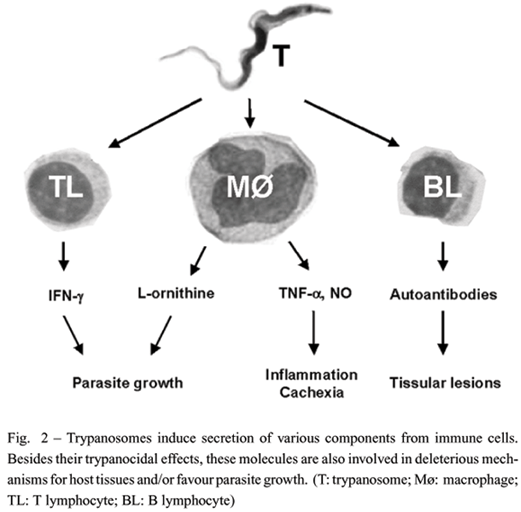Major modifications of immune system have been observed in African trypanosomiasis. These immune reactions do not lead to protection and are also involved in immunopathology disorders. The major surface component (variable surface glycoprotein,VSG) is associated with escape to immune reactions, cytokine network dysfunctions and autoantibody production. Most of our knowledge result from experimental trypanosomiasis. Innate resistance elements have been characterised. In infected mice, VSG preferentially stimulates a Th 1-cell subset. A response of <FONT FACE=Symbol>gd</FONT> and CD8 T cells to trypanosome antigens was observed in trypanotolerant cattle. An increase in CD5 B cells, responsible for most serum IgM and production of autoantibodies has been noted in infected cattle. Macrophages play important roles in trypanosomiasis, in synergy with antibodies (phagocytosis) and by secreting various molecules (radicals, cytokines, prostaglandins,...). Trypanosomes are highly sensitive to TNF-alpha, reactive oxygen and nitrogen intermediates. TNF-alpha is also involved in cachexia. IFN-gamma acts as a parasite growth factor. These various elements contribute to immunosuppression. Trypanosomes have learnt to use immune mechanisms to its own profit. Recent data show the importance of alternative macrophage activation, including arginase induction. L-ornithine produced by host arginase is essential to parasite growth. All these data reflect the deep insight into the immune system realised by trypanosomes and might suggest interference therapeutic approaches.
Trypanosome; African trypanosomiasis; immunology; macrophage; lymphocytes; nitric oxide; cytokine; autoantibodies


